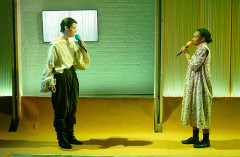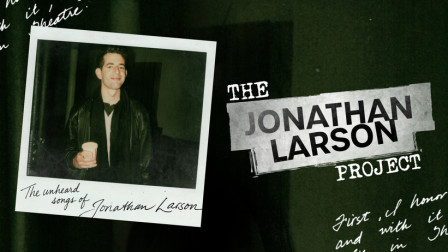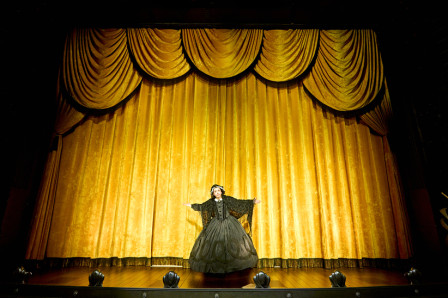Review: THE CRUCIBLE by Arthur Miller at The Yard Theatre
 If you’re looking for a postmodern, energetic tale of America’s dark past, Jay Miller’s production of The Crucible may be just for you, though some staging does detract from the tremendous power of the piece.
If you’re looking for a postmodern, energetic tale of America’s dark past, Jay Miller’s production of The Crucible may be just for you, though some staging does detract from the tremendous power of the piece.
An impressively modern production at the Yard Theatre, exciting and relevant to today, but let down by excessive “vision.”
In 1693, 200 prosecutions of witchcraft claimed the lives of 19 Salem residents who would not confess, the bloodiest witch-hunt in American history. This four act true story revolves around faithful landowner John Proctor, the voice of reason battling against an entire town gone mad by accusations of witchcraft and fake news. The contemporary parallels in 1953 – when author Arthur Miller won the Nobel Prize are palpable today as they ever were.
While choices like a stilted, abstract staging of Act 1 detract from the play, Jay Miller has strikingly stronger choices in store for us. Caoilfhionn Dunne wows as the irascible lead, John Proctor and the transformation of wife Elizabeth (Emma D’Arcy) from wounded spouse into the real power behind her husband’s actions ensures that Act 2 really comes alive.
Action accelerates as the Proctors are drawn into the feverish accusations. The play explodes into Act 3 with some stunningly affecting effects by a truly powerful Judge Danforth, absolute arbitrator of truth and punishment.
The final act is suitably macabre and although the extras walking about throughout the play in silly, warlock-like masks are as pointless in this scene as in the rest of the play, they do not detract.
The play closes with the most powerful lines in all of English drama… or at least it should. Two seconds after blackout sends the audience into applause, the lights come back on – arresting the applause – and a short vignette unfolds, so reductive as to undo all the excellent work of the stellar, nine-person cast. The presence of the warlock-witches comes to the fore and the whole play falls apart moments after it should have ended.
Despite the excessive post-modernism (or perhaps because of it), this is a fantastic introduction to Arthur Miller’s greatest play. Don’t be put off by excessive directorial vision which – if it had been kept in check – would have elevated this engaging and worthwhile production to true greatness.
Latest News

 Review Round-Up: OH, MARY! at the Trafalgar Theatre
19 December 2025 at 15:53
Review Round-Up: OH, MARY! at the Trafalgar Theatre
19 December 2025 at 15:53

 The Jonathan Larson Project announces London premiere
19 December 2025 at 10:31
The Jonathan Larson Project announces London premiere
19 December 2025 at 10:31

 Oh, Mary at Trafalgar Theatre Review
19 December 2025 at 09:46
Oh, Mary at Trafalgar Theatre Review
19 December 2025 at 09:46

 Kerry Ellis completes cast for West End concert of Jo - The Little Women Musical
19 December 2025 at 09:35
Kerry Ellis completes cast for West End concert of Jo - The Little Women Musical
19 December 2025 at 09:35
